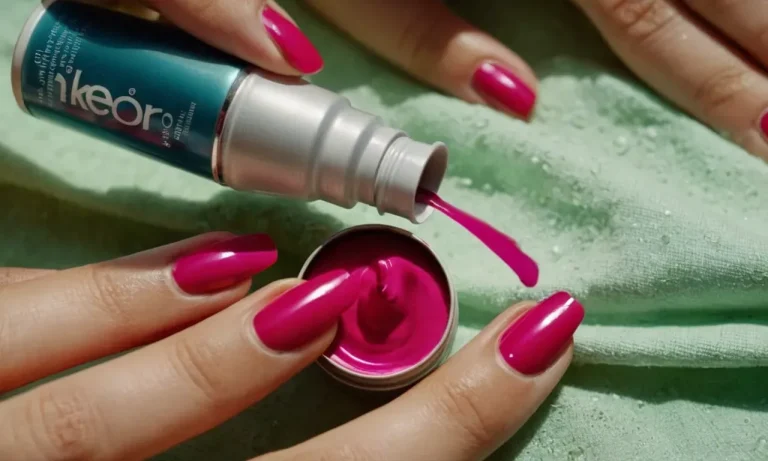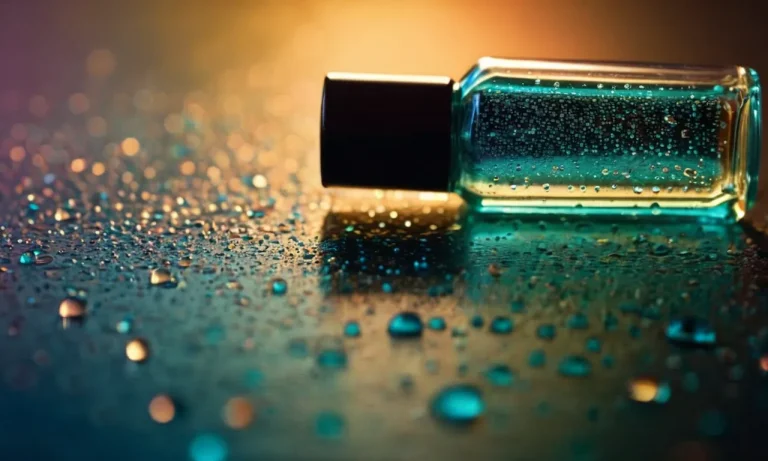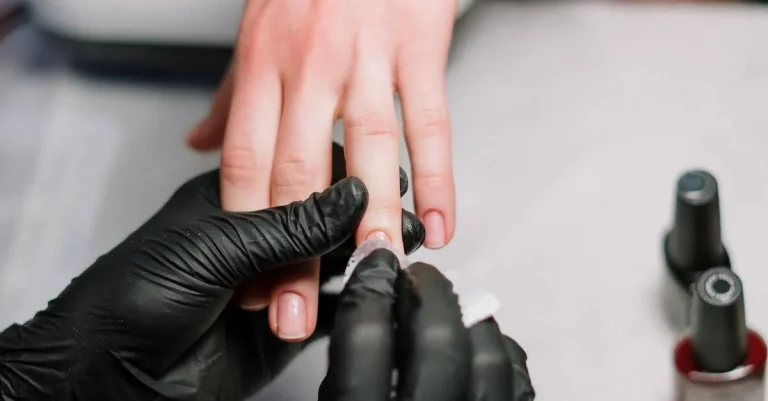How To Clean Nail Drill Bits: A Complete Guide
If you use a nail drill regularly in your salon or at home for manicures and pedicures, you know how important it is to keep the drill bits clean. Dirty drill bits can cause infections, ruin your manicures, and stop the drill from working properly.
If you’re short on time, here’s a quick answer to your question: Soak drill bits in pure acetone or nail polish remover for 10-15 minutes, scrub with a small brush, rinse well, and allow to air dry completely before storing or reusing.
In this comprehensive guide, we will go over everything you need to know about properly cleaning nail drill bits, including: why cleaning them is so important, when you need to clean them, what supplies you’ll need, step-by-step instructions for manual and ultrasonic cleaning, how to disinfect and sterilize them, and tips for storage and maintenance.
Why It’s Important to Clean Nail Drill Bits
Prevent Infections
Keeping nail drill bits clean is crucial for preventing the spread of infections. Bits used on multiple clients can harbor bacteria, fungi, and viruses that can be transferred from person to person. Some common nail salon infections that can be passed via unclean drill bits include fungal infections, viral warts, and bacterial infections like pseudomonas and staphylococcus.
According to the CDC, improperly cleaned nail tools and equipment are a major cause of infections spread in salons. Bits used on infected nails can retain debris and microorganisms even after use. If not properly disinfected, these germs can be introduced into the skin and nails of the next client, causing redness, swelling, and pain at the site of contact.
Proper cleaning and disinfection destroys disease-causing microorganisms. This prevents cross-contamination and protects the health and safety of both nail technicians and clients.
Improve Performance
Regular cleaning maintains the proper functioning of nail drill bits. Bits used on multiple clients without cleaning build up debris, nail material, dust, and rouge. This residue can clog up the end of the bit, reducing its cutting efficiency and leading to friction, heat buildup, and excessive vibration.
Cleaning removes this buildup, keeping the end of the bit free of debris so it can spin smoothly. This allows the bit to operate at optimal performance, improving precision and control for the nail technician.
Uncleaned bits may also retain traces of disinfecting agents like bleach that can be corrosive over time. Proper cleaning rids bits of chemical residue that can degrade the metal and shorten the working life of the bit.
Make Bits Last Longer
Regular cleaning and maintenance helps extend the longevity of nail drill bits. As mentioned, buildup of material on the bit can impede performance and friction created can damage the bit over time. The heat generated from friction while drilling can also anneal the metal of the bit, making it softer and more prone to wear.
By removing debris and rouge, cleaning reduces friction and heat, preventing damage to the structural integrity of the metal. This allows the bits to remain sharper for longer. Bits also stay free of corrosion caused by disinfecting chemicals that get trapped in neglected buildup.
When to Clean Your Drill Bits
After Each Use
Cleaning your nail drill bits after each use is crucial to prolonging their lifespan and preventing the spread of infections between clients (source). Here’s why you should make this a regular habit:
- Removes nail debris, dust, and germs – Not cleaning the bits allows debris and germs to build up over time.
- Prevents clogging – Bits that aren’t cleaned can get clogged with dust and particles, affecting their performance.
- Extends bit life – Regular cleaning removes abrasive particles stuck in the bits which damages them over time.
Get into a routine of disinfecting the entire nail drill machine and soaking/brushing bits after each client. It only takes a few extra minutes but pays off tremendously in the long run. An ounce of prevention is worth a pound of cure, as they say!
Before First Use
Brand new drill bits often arrive with a thin oily residue or protective layer meant to prevent rust during shipping and storage (source). Before using new bits for the first time:
- Wash with soap and water – Helps remove any oil or grease on them.
- Sterilize – Use an autoclave or chemical sterilizer like Barbicide to fully disinfect before use.
Skipping this pre-use cleaning leaves oil behind which spreads to clients’ nails, attracts more dust/debris during use, and breeds bacteria over time. So remember to give those new parts a good wash!
If Visibly Dirty
In addition to regular post-use cleaning, inspect bits before each client and clean if visibly dirty or contaminated (source). Telltale signs requiring recleaning include:
- Dull appearance
- Accumulated dust/debris
- Discoloration
- Pitted surface
Bits used on infected or fungal nails can retain contagions even after cleaning too. When in doubt, take a minute to soak and gently scrub bits so they look fresh again before the next procedure.
Staying vigilant between clients is vital for infection control. An old nail tech adage wisely states, “Better safe than sorry!” 😊
Supplies Needed for Cleaning
Acetone or Nail Polish Remover
Acetone-based nail polish remover is the number one supply needed to clean nail drill bits. The acetone is an effective solvent that will break down and remove the built-up nail product, adhesive, acrylic, and gel residue on used drill bits (1).
Make sure to use 100% pure acetone without any additives. You can find inexpensive acetone at any drugstore or beauty supply shop.
Small Brush
A small, stiff-bristled brush is great for scrubbing away debris stuck in the grooves, holes, and crevices of nail drill bits. An old toothbrush, pipe cleaner, or even a small detail brush can work well. Use the brush to gently scrub bits while soaking in acetone to help loosen any stubborn gunk.
Ultrasonic Cleaner (Optional)
While not essential, using an ultrasonic jewelry cleaner can make cleaning nail drill bits fast and easy. The ultrasonic waves vibrate and agitate the acetone to lift and dissolve debris. Drop bits into the stainless steel basket, fill with acetone, turn on for 5-10 minutes, and bits will come out looking like new!
Gloves
Wearing gloves is recommended when cleaning drill bits to protect your hands from exposure to harsh acetone fumes. Nitrile, latex, or rubber gloves work well. Replace gloves periodically as acetone can degrade the material over time.
Safety Goggles
Safety goggles or other eye protection can shield your eyes from nail debris, acetone splashes, and fluids that may spray out when scrubbing drill bits. Avoid eye irritation and damage by always wearing ANSI-approved goggles when cleaning nail tools.
Disinfecting Solution
After removing all visible residue, drill bits should be disinfected to kill any germs or bacteria. An EPA-registered disinfectant made for salon tools is best, but an alcohol solution or spray also works. Soak or spray bits and let sit for 10 minutes before a final rinse.
Paper Towels or Clean Cloth
Have paper towels or a clean soft cloth on hand to dry drill bits after cleaning. Make sure bits are completely dry before storing or using them again. Leave them spread out on the cloth or paper towel to air dry fully.
How to Manually Clean Drill Bits
Soak in Acetone
The first step when cleaning nail drill bits is to soak them in pure acetone. Acetone is a solvent that breaks down nail product residue and buildup. Fill a small container with enough acetone to fully submerge the drill bits and let them soak for 10-15 minutes.
The acetone will help loosen any hardened gel, acrylic, nail polish, dust, and debris. For best results, use 100% pure acetone without additives.
Scrub Away Debris
After soaking, take an old toothbrush or small scrub brush and gently scrub each drill bit under acetone to help dislodge any remaining residue. Pay close attention to the grooves and edges where buildup commonly occurs.
Take your time and carefully scrub away all visible debris – don’t rush this step! Proper scrubbing will ensure the drill bits are completely clean.
Rinse Thoroughly
Once satisfied with the scrubbing, thoroughly rinse the drill bits under warm running water. This removes all traces of acetone and dissolved nail material. Rinsing prevents residue from re-hardening onto the bits. Shake off excess water and inspect closely under good lighting.
Look for any remaining cloudiness or debris. Give an additional scrub and rinse if needed.
Allow to Dry Completely
After rinsing, place bits on a clean towel and allow to air dry completely before storing. Do not put away wet drill bits, as moisture can damage them. It is recommended to let them dry overnight for best results. Once fully dry, they are ready to be used on your next client!
Proper cleaning and maintenance of nail drill bits is crucial for sanitation, performance, and longevity. By manually scrubbing in acetone, rinsing, and drying after each use, you can remove buildup and debris to keep bits running like new.
Implementing these simple steps into your routine will save time and money in the long run.
Using an Ultrasonic Cleaner
An ultrasonic cleaner is an efficient and convenient way to deep clean nail drill bits. The high frequency sound waves generated in an ultrasonic bath help thoroughly remove all debris, dust, dried gel, and nail product buildup that accumulate on bits over time with regular use.
Fill Tank with Solution
The first step is to fill the stainless steel tank of your ultrasonic unit with warm water and a cleaning additive per the manufacturer’s instructions. Popular commercial cleaning solutions made for these systems contain ingredients like detergent and degreasing agents that break down residue when activated by ultrasonic vibrations.
For home units, even mild dish detergent diluted in warm water works to lift away grime.
Submerge Bits
Once your ultrasonic bath is filled with the cleaning mixture, fully submerge nails drill pieces in the solution. Pieces should have ample room between them and not be crammed too tightly. The vibration waves need to be able to penetrate and surround each bit for optimal effect.
Set acrylic nails can also be soaked in the bath if you wish to remove all product from their surface.
Clean Cycle
Turn on your ultrasonic cleaner unit to run a cycle per the device guidelines, usually 5-10 minutes. You’ll see tiny bubbles form in the solution as sound waves move through it to gently but thoroughly blast away buildup.
Continuous exposure to high frequency vibration dissolves residue that might otherwise take ages remove by hand. Have paper towels ready when finished.
Rinse and Dry
After ultrasonic cleaning, use the provided basket to remove nail drill bits from the bath and transfer them to a strainer. Thoroughly rinse pieces under running water to wash away any remaining cleaning solution. Make sure water runs clear.
Wipe away moisture with a paper towel or clean, lint-free cloth. Allow bits to air dry completely on the towel before returning to your manicure kit or electric nail drill.
According to nail care experts, an ultrasonic cleaner is considered the gold standard for keeping nail drill bits like diamond, carbide, ceramic, and metal ones hygienic for repeated, safe use (Source). The powerful but gentle sonic cleaning leaves them free of residue buildup for smooth operation.
Disinfecting and Sterilizing Bits
Chemical Disinfectants
Using EPA-registered disinfectants is an effective way to clean drill bits in between uses. Popular options contain ingredients like quaternary ammonium, phenols, alcohols, and chlorine. These chemicals disrupt pathogens at a molecular level.
It’s crucial to fully submerge bits and soak them for the product’s recommended contact time to allow full disinfection. Typically this is 5-10 minutes. Consult individual disinfectant instructions.
According to the CDC, chemical disinfectants inactivate viruses, bacteria, and fungi when used correctly. They recommend using EPA-registered hospital grade disinfectants for maximum germ killing action.
UV Light Sterilizers
UV-C light damages microbial DNA and RNA structures, effectively killing bacteria and viruses. Specialized nail tech UV sterilizers hold multiple bits while administering a sterilizing dose of UV rays.
Per research, UV doses from 5-50 mJ/cm2 destroy up to 99.9% of pathogens. Nail tech UV boxes deliver ~35 mJ/cm2 during an average 5-20 minute cycle. Be sure bits receive direct light exposure for full treatment.
UV sterilization has the advantages of being non-toxic and fast. Bits can go back into use after a single cycle. Salon studies reveal UV effectively suppresses microbial growth when disinfecting salon tools.
Autoclaves
Autoclaves use pressurized steam heat for sterilization. They expose items to 132°C heat and 206 kPa pressure for over 15 minutes, killing all viral, bacterial, and fungal contamination.
A 2011 study testing autoclave efficacy on contaminated nail files found a 100% bacteria elimination rate after an average 17 minute cycle. Autoclaves left bits sterile up to a 4 week testing period.
While effective, autoclaves have the downsides of high costs (~$400+) and longer sterilization cycles that limit bit turnover. Still, for maximum disinfection assurance, autoclaving is the gold standard.
Storing and Maintaining Drill Bits
Allow to Fully Dry
After each use, it is crucial to properly clean and dry your nail drill bits before storing them away. Bits that are put away wet or dirty can become corroded over time, shortening their usable lifespan. Give your bits ample time to air dry completely after cleaning them.
It is recommended to let them dry for at least a few hours, or overnight if possible. Rushing this drying period by putting still damp bits into storage can allow moisture to damage the metal over time.
Store in Covered Container
Once fully dry, store drill bits in a sealable plastic container or zippered pouch. This protects them from exposure to dust, dirt, and moisture when not in use. Try to store them upright in a way that prevents the bits from rubbing against each other, as this can cause scratches or damage over time.
Some kits come with a specialized case or holder designed for storing drill bits properly. Investing in one of these organizers can help prolong the life of your bits. Just be sure the container seals tightly to prevent dirt or moisture from seeping in.
Regular Inspection and Replacement
It’s smart to periodically inspect drill bits for signs of wear and tear. Check for discoloration, scratches, chips, or damage to the coating. Even with proper care, bits will eventually become too worn for effective use.
According to nail care experts, drill bits should be replaced every 6-12 months with regular use. High-quality carbide and diamond bits may last longer, while inexpensive steel bits tend to degrade faster.
Keep an eye out for reduced cutting ability, excessive heating, or other changes in performance that indicate dullness. Replacing bits regularly helps prevent damage to nails or skin from overly dull bits pulling and catching.
Maintaining your investment in drill bits involves proper sterilization, drying, storage, and replacement habits. With attentive care between uses, your nail drill bits can stay sharp and effective for many manicures to come!
Simple steps like allowing bits to fully air dry before sealing them away in a protected container will help prevent premature corrosion. And remember to routinely check for wear and replace any degraded bits.
Following these best practices will have you drilling through nails with ease for years of service.
Conclusion
Keeping your nail drill bits clean is a crucial part of salon hygiene and properly maintaining your manicure tools. By thoroughly cleaning drill bits after each use, disinfecting them, and storing them properly, you can prevent infections, improve performance, and extend the usable life of your bits.
With the proper supplies and these easy step-by-step instructions, you can keep your drill bits in tip-top shape. Remember to allow bits to fully dry before storing and inspect them regularly for any damage. Proper care will have your drill bits working like new for many manicures to come!







